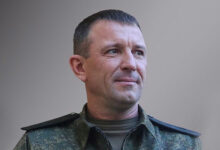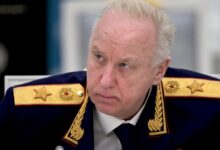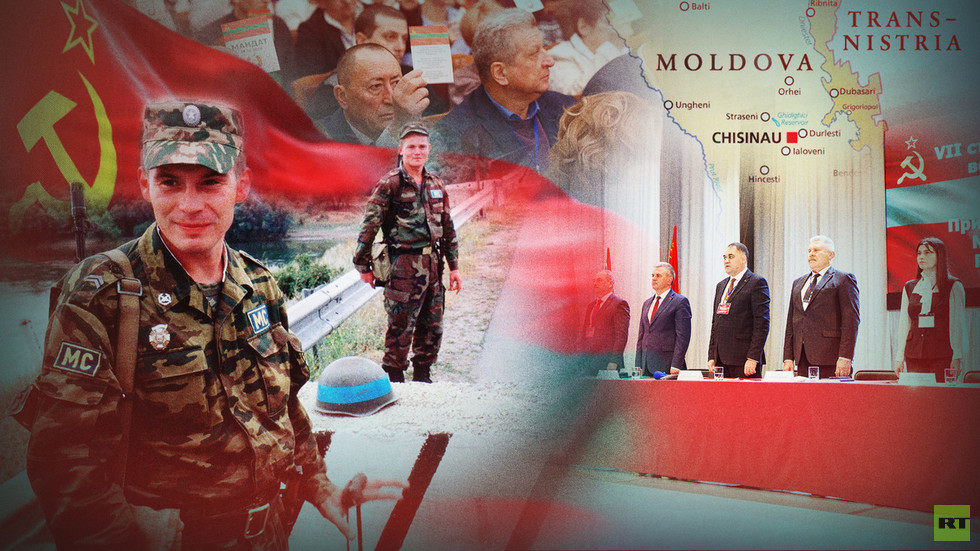
Moldova is pursuing a policy of pressure and economic blockade on Transnistria, but Moscow has plenty of skin in the game

© RT / RT
Trasnistria is a small unrecognized republic, in Eastern Europe, which is internationally recognised as being part of Moldova. On February 28, local authorities convened the Congress of People’s Deputies from all levels of the Transnistrian Government, which was last held 18 years ago. Before the event, the press had discussed the possibility that the breakaway region could turn to Moscow with a request to accept it into the Russian Federation. However, despite various statements, the deputies only requested diplomatic assistance, in light of the fact that many Russian citizens reside in the region. The official statement emphasized help and mediation, not military assistance or the integration of the territory into Russia.
The deputies also addressed the UN, the OSCE, the Red Cross, and the European Parliament, requesting these organizations take into account the “inalienable rights of the Transnistrian people.” However, despite the peaceful character of these initiatives, Moldova responded with mobilization measures: it announced the registration of transport vehicles and their potential transfer to the army in the event of full-scale hostilities.
Here explore what led to this new deterioration of relations between Moldova and Transnistria, why the breakaway republic remains a potential “hotspot,” and how Russia may help its compatriots in the midst of the armed conflict in Ukraine.
The essence of the conflict
Transnistria is sandwiched between Moldova and Ukraine. Since 1992, the territory has been an unrecognized de facto state, officially called the Pridnestrovian Moldavian Republic (PMR). All UN members, including Russia, officially consider it to be a part of Moldova.
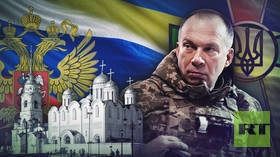
Read more
Transnistria uses the Cyrillic alphabet, while Moldova switched to the Latin alphabet in 1989. The population of the unrecognized republic is estimated to be around 465,000 people. Most residents consider Russian their native language, and many people have dual or even triple citizenship (Moldovan, Russian, and Ukrainian).
The Transnistrian conflict is often referred to as “frozen,” since there have been no direct hostilities between Transnistria and Moldova since 1992. However, Moldova still insists that Russian peacekeepers should leave the region. For its part, Russia says that it is ready to withdraw troops and even help destroy the leftover weapons and ammunition, but only as soon as the two sides engage in constructive dialogue.
As of the beginning of 2024, relations between Moldova and Transnistria are at their lowest point for decades.
Breaking the information blockade
On February 20, the former chairman of the State Communications, Information, and Media Service of Transnistria, Gennady Chorba, posted on his Facebook page that Russian President Vladimir Putin would announce the decision to accept the breakaway region into the Russian Federation during his Presidential Address to the Federal Assembly on February 29. The Transnistrian official added that the Transnistrian Congress of Deputies is held rarely, and only on important occasions.
For example, in 1991, the congress convened to create an independent executive branch in Transnistria and in the same year approved the flag, coat of arms, and the constitution of Transnistria. In 2006, at the last congress, the deputies decided to hold a referendum on the independence of the unrecognized republic and its subsequent entry into Russia (97% of voters supported the initiative).
On February 22, the US Institute for the Study of War (ISW) published a “warning” that the breakaway republic may indeed “organize a referendum on annexation to Russia.” According to analysts, the decision could be motivated by the need to defend Russian citizens who reside in Transnistria from threats coming from Moldova and NATO.
This time, the congress was convened by Transnistrian President Vadim Krasnoselsky, who accused Moldova of imposing an economic blockade on the region. He also accused Moldovan Foreign Minister Mihai Popșoi of placing Transnistria in Moldova’s constitutional sphere of influence. “I want to remind Mr. Mihai Popșoi and his colleagues that they tried to impose the so-called constitutional order in 1992, when they invaded Transnistria and killed Transnistrian people. Who is responsible for killing all those women, elderly people, and children?”
The reaction from across the Dniester river was swift: Moldova’s Bureau of Reintegration stated that it was “closely monitoring the situation” and that “there is no reason to believe that the situation in the region may become worse.”
At the same time, Ukrainian Ambassador-at-Large Paun Rogovey said that Kiev would “respond decisively to any provocations aimed at dragging the Transnistrian region into Russia’s war against Ukraine and destabilizing the situation in Moldova.”
Shortly before the start of the Congress of Deputies, the event was commented on by top Moldovan officials. Parliamentary speaker Igor Grosu noted that there was no danger of an escalation of hostilities or destabilization in the region. “There will be a propaganda campaign (…) and, perhaps, in addition to the gas that they get for free, they will get something else [from Russia]. We urge people to stay calm, and if necessary, we will intervene and inform citizens.”
The Main Intelligence Directorate of the Ministry of Defense of Ukraine did not then confirm rumors about a possible escalation either.
However, the situation continues to heat up. On the eve of the congress, President Krasnoselsky said that Moldova, aided by Ukraine, was preparing to send armed groups to sabotage military facilities in Transnistria, and the region’s authorities have already notified international organizations, including the OSCE.
A potential hotspot
Even analysts who usually avoid militaristic scenarios found many parallels between the current situation and the one that developed around the Donetsk People’s Republic (DPR) and the Lugansk People’s Republic (LPR) in February 2022. In both cases, a post-Soviet country had difficult relations with Russia and wanted to increase cooperation with the US and EU; and also similarly, it exerted pressure on its breakaway republics, which turned to Moscow for help. However, all post-Soviet conflicts and hotspots are unique in their own way, and don’t have a common denominator.
Presently, it would be quite difficult for Transnistria to become a part of Russia for a number of reasons. Firstly, considering the upcoming presidential elections in Moldova, there’s still a chance to “reset” Russia-Moldova relations, and any change in the status of Transnistria at this time would sharply raise the stakes. Secondly, a NATO intervention in the crisis may create severe risks, comparable to the situation in Ukraine, especially in light of the global confrontation between Russia and the US. Thirdly, over the years, local elites have become accustomed to following a pragmatic political course and are able to “smooth out the sharp edges” when it comes to foreign policy.
However, the rumors of a potential escalation didn’t just come out of the blue. They were preceded by mounting tensions between the conflicting sides.
On January 1, Moldova abolished import and export tax privileges for Transnistrian companies. Transnistria saw this step as economic pressure and defined it as a “tribute payment.” Its budget losses from the new fees will amount to $16 million annually. The goods cannot be delivered via the Ukrainian border either, since Ukraine blocked communication with the unrecognized republic on February 24, 2022, fearing that the Russian peacekeeping contingent, which is stationed in the region, could launch an offensive from Transnistria.
However, it should be noted that after the armed conflict in 1992, relations between Moldova and Transnistria were quite different from what we saw between Ukraine and the DPR and LPR after the signing of the Minsk Agreements. Moldova and Transnistria got along peacefully, Transnistrian enterprises operated and exported goods into Moldova, and the border was open. Officials had never seriously considered a military solution to the issue.
Presently, Moldova has decided to tighten the measures of economic control in order to force the breakaway region to “reintegrate” with the republic. Transnistria fears that, following the customs tax, Moldova will introduce a value-added tax (VAT) and excise taxes on fuel, alcohol, and tobacco, and will force the unrecognized republic to pay taxes into the general budget. According to Transnistrian Foreign Minister Vitaly Ignatiev, this would be for the first time ever since the creation of the unrecognized republic.
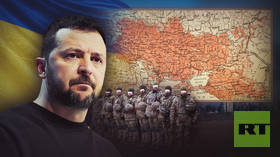
Read more
Secondly, Moldovan lawmakers adopted amendments to the nation’s criminal code, according to which people may be imprisoned for separatism (the residents of Transnistria are considered separatists in Moldova) for a period of two to five years.
Thirdly, Moldova is about to prohibit the use of Transnistrian license plates on vehicles. This means that Transnistrian car owners will have to either get Moldovan ones or pre-approved neutral alternatives.
In other words, bilateral relations are deteriorating and things are moving towards a full-blown economic war, which will further destabilize the internal political situation in Moldova. Considering the upcoming presidential elections in Moldova this year, it is difficult to predict whether President Maia Sandu will be reelected.
The speaker of the Transnistrian parliament, Alexander Korshunov, has said that Moldova’s actions will make life more difficult for the region’s socially vulnerable citizens and confirmed that the Congress of Deputies has always convened “in difficult times for the republic.”
However, despite the rumors, the possibility that Transnistria may become a part of Russia was not discussed at the congress. Instead, the deputies adopted two documents: a resolution and a declaration.
In the resolution, the deputies accused Moldova of unleashing an economic war, blocking the supply of medical equipment and medicines, and deliberately creating prerequisites for a multimillion-dollar budget deficit in Transnistria.
“Moldova deliberately blocks negotiations and avoids political dialogue at the level of the parties’ top leadership (…) Transnistria is under socio-economic pressure, which directly contradicts European principles and approaches in the field of human rights protection and free trade. Moldova has failed to recognize the existence of inalienable universal human rights and freedoms in regard to the population of Transnistria,” the declaration states. It also contains a set of specific measures that the Congress of Deputies considers necessary to implement.
One of the measures concerns Russia. The deputies adopted the declaration and addressed the Russian Federation Council and State Duma (the two chambers of the Russian Parliament) “with a request to implement measures to protect Transnistria in the face of increasing pressure from Moldova, taking into account the permanent residence of over 220,000 Russian citizens on the territory of the Pridnestrovian Moldavian Republic.” The delegates noted that “Russian peacekeeping [efforts] on the Dniester” are “unique and positive” and called Russia a guarantor and mediator in negotiations with Moldova.
Moreover, the delegates appealed to UN Secretary-General Antonio Guterres, the participants of the 5+2 talks (the EU, OSCE, Russia, US, and Ukraine plus Transnistria and Moldova), the CIS Interparliamentary Assembly, the European Parliament, the International Committee of the Red Cross, and the OSCE, to influence the Moldovan leadership “to return to an adequate dialogue within the framework of the international negotiation process.”
“The voice of the Transnistrian people must be heard, and we must talk about our freedoms, our rights, the right to economic activity, and ultimately, to peace,” Transnistrian President Vadim Krasnoselsky said at the close of the congress.
What’s next?
The Congress of Deputies in Transnistria was only a ‘warning shot’. Transnistria was mainly addressing Moldova and its Western partners, demonstrating that the situation in the region is quite serious. By adopting these documents, Transnistria hopes that the Western participants of the 5+2 talks will influence Moldovan President Maia Sandu to return to the previous format of economic relations.
After all, the situation is indeed growing worse. If the parties fail to agree on the customs and trade issues, Chisinau might impose a full blockade on Transnistria, which would prevent any of its goods from entering Moldova. This could bring the conflict to another level, and the consequences could be a lot more severe.
However, it is still unclear how the situation may escalate and what Transnistria and Russia would do in such a case. Due to the conflict in Ukraine, Transnistria is currently completely cut off from Russia. Transnistrian authorities cannot rely on Russia’s political, economical, financial, or even military support. Russian peacekeeping forces in Transnistria amount to no more than 1,200 servicemen. In the absence of a land border with the unrecognized republic, Russia cannot transfer additional forces to Transnistria, while the current number of troops is not sufficient for long-term defense.
Therefore, there is no reason to believe that Russia is ready to make major decisions regarding Transnistria in the near future. However, Russian officials have suggested that the Armed Forces of Ukraine (AFU) could become more active on the Transnistrian border, and Russia may want to establish a land corridor to Transnistria through the southeastern regions of Ukraine.
Presently however, we see that the parties are only raising the stakes in the big geopolitical game. Although the situation in Transnistria has often been in the media spotlight since the beginning of the hostilities between Russia and Ukraine, so far it has not escalated in a major way.
There’s little doubt that the situation on the southern front of Russia’s military campaign in Ukraine will largely determine the fate of the region. This fact has also been noted by NATO.

Read more
“Given Russia’s increasingly aggressive and destabilizing role in Europe, we are watching Russia’s actions in Transnistria and the broader situation there very closely. The United States firmly supports Moldova’s sovereignty and territorial integrity within its internationally recognized borders,” US State Department spokesperson Matthew Miller has said. NATO Deputy Secretary General Mircea Geoana has also expressed support for Moldova.
At the moment, neither side has a good enough reason to launch a military operation. Such a scenario does not suit Moldova for a number of reasons. Firstly, the unique format of the existing agreements reduces the risks that Transnistria may become drawn into the hostilities; secondly, the Moldovan Armed Forces are in a deplorable state and would not be able to conduct a successful offensive; thirdly, considering the forthcoming presidential elections in Moldova, the country cannot violate its constitutionally-prescribed neutrality and launch an accelerated process of integration into NATO similar to the Ukrainian scenario.
In the absence of an immediate threat from Transnistria, a potential escalation of the conflict would not benefit Ukraine either. The Ukrainian army has a severe shortage of personnel and is having trouble defending its positions along the entire length of the front line, so it would be extremely difficult for Kiev to shift troops to the area. The situation is also aggravated by the cessation of arms supplies from the US, failures at the front, the closure of the border with Poland, and the growing internal opposition against Ukrainian President Vladimir Zelensky. Perhaps this is why Ukrainian officials have spoken out about the situation cautiously – the authorities intend to maintain the status quo and avoid direct conflict, especially considering the fact that an invasion would be possible only with the direct permission of Moldova.
Since the 1990s, the unresolved issues around Transnistria have become more severe, but have not yet caused a major escalation between the breakaway region and Moldova. However, if Moldova continues to economically ‘swallow up’ the unrecognized republic through tax and customs reforms and imposes a complete economic blockade, then the conflict will likely escalate. The only question is how far it would go and at what point it would stop.
By Petr Lavrenin, an Odessa-born political journalist and expert on Ukraine and the former Soviet Union

